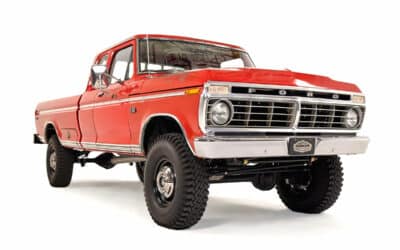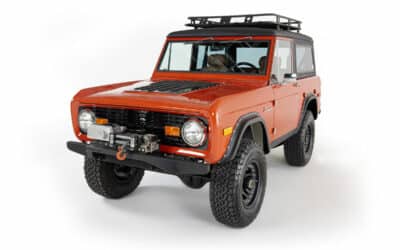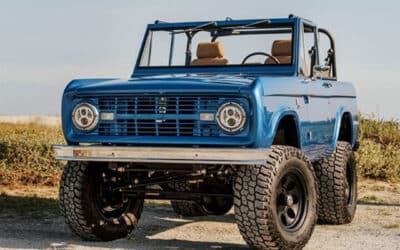Rust. That four-letter word sends shivers down the spines of car enthusiasts and collectors, especially those with a passion for the classic Ford Bronco.
Buying a vintage Bronco is a substantial investment, so understanding how to identify and manage rust is crucial. We’ll go over some buying tips that will make your life easier like the common places to find rust, what to do when you find it, and when to throw in the towel and replace the entire frame if the rust has gotten too bad.
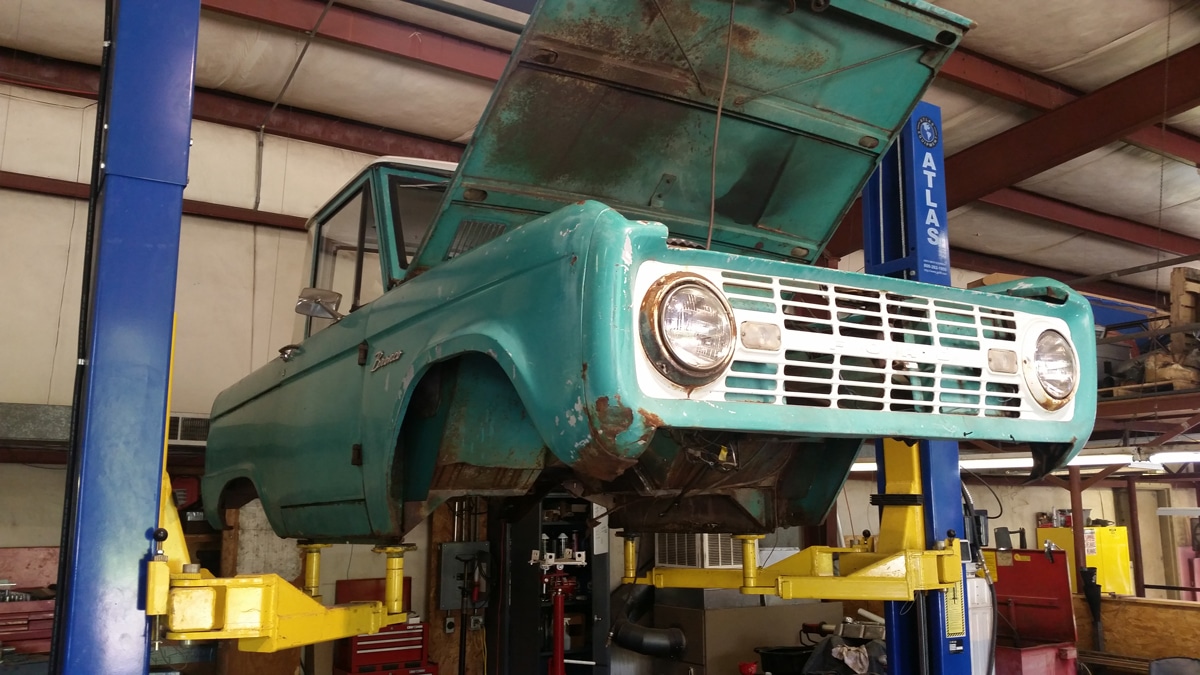
The original Ford Bronco was produced from 1966 to 1977. It featured a mild steel box-section frame, a common choice for car frames at the time.
The mild steel used in a classic Bronco is vulnerable to rust if not properly cared for, particularly in environments with high moisture or salt no matter which Bronco model you have. This, unfortunately, means Broncos are often susceptible to rust issues, especially those that haven’t been garaged or have been located or used extensively in harsh conditions. These are good things to know before you start restoring an old Ford Bronco.
You’ll often find that people can’t recall how long the Bronco has been left outside or when the last time it was started. You can certainly take their information into account but don’t solely rely on it. You’re going to need to check the parts and features yourself!
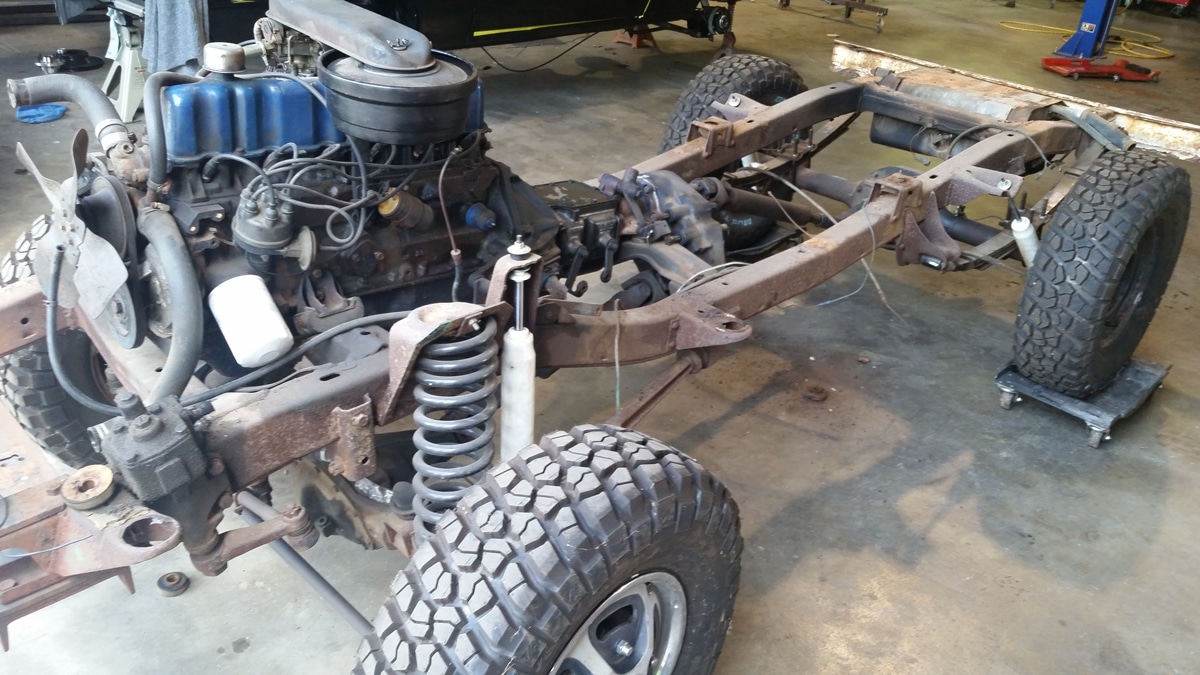
Common Places to Find Rust on Your Ford Bronco Frame
When inspecting your Ford Bronco’s frame, certain areas are more prone to rust. Here are a few places you have to search!
Frame Welds:
Welds are one of the common places rust can start on a Bronco frame. When you start your search pay special attention to the welds, especially around the suspension mounts, engine mounts, and cross members. Welds can often trap moisture, starting the rusting process.
Frame Bends:
Frame bends or curves are another area to keep an eye on. These areas can hold moisture and are prone to rusting.
Frame Ends:
The open ends of the frame tubes can allow water and debris inside, leading to internal rusting. Frame plugs or caps can help mitigate this, but they should be removed during the inspection of the Bronco to ensure no rust is hiding within. Our frame is sealed from the outside elements with sealed frame rails, eliminating water and moisture causing rust from the inside out.
Crossmembers:
Crossmembers support the frame and can often be a hotspot for rust, especially where they meet the frame rails. Inspect these carefully for signs of rust.
Drainage Holes:
These holes in your Bronco were designed to let water out but can also let water in if the Bronco is driven through deep water. Always inspect these areas.
When inspecting your Bronco frame for rust, it’s important to not just look but also feel. Sometimes, what looks like a minor bubble or a chip in the paint on the outside can hide significant rust underneath.
Also, rust can sometimes begin on the inside of the frame and work its way out, so using a borescope or similar tool to inspect the inside of the frame can be beneficial.
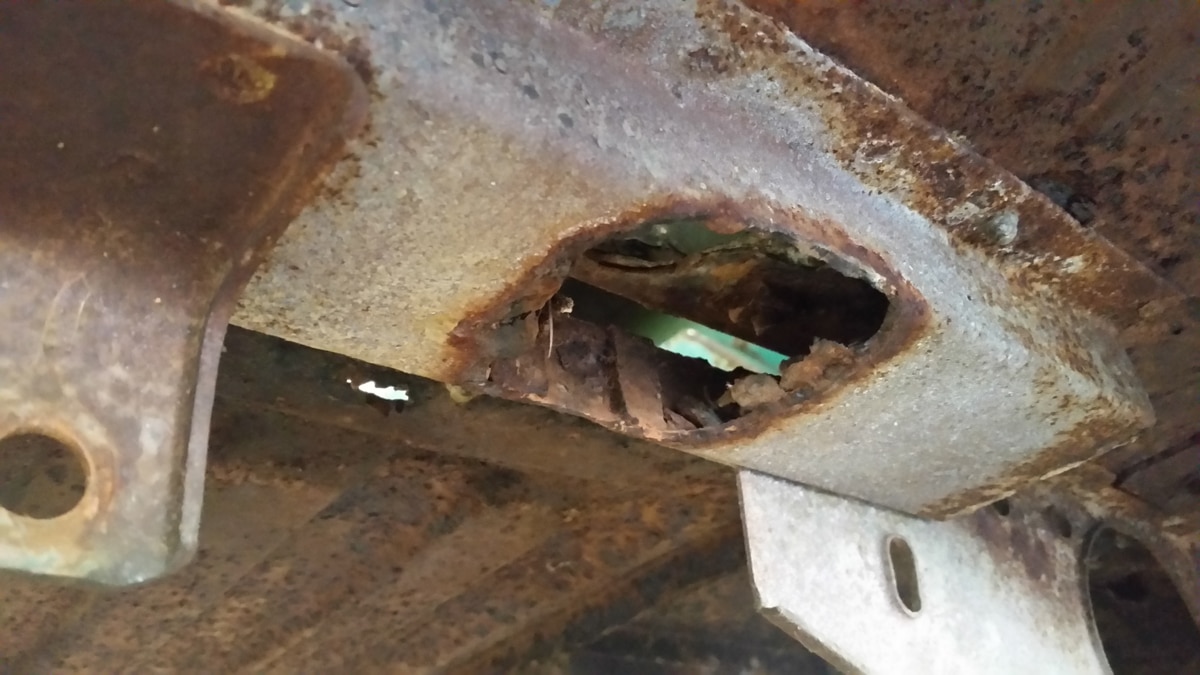
What to Do When You Find Bronco Frame Rust
If you find rust on your Bronco, don’t panic, and don’t listen to all the messages you read in forums. Depending on its extent, it can be remedied.
Surface Rust:
This is the earliest stage of rust, appearing as small speckles on the surface. It’s best to deal with surface rust promptly before it advances. Light sanding or the use of a wire brush, followed by a coat of rust inhibitor, should solve the problem.
Scale Rust:
If rust has penetrated deeper into the steel, forming flakes or scales, you need a more aggressive approach. A grinder or a wire wheel on a drill can be used to remove scale rust. Once removed, apply rust converter and primer.
Penetrating Rust:
This is the most serious form of rust, where it has eaten through the metal, leaving holes. In this case, the affected area should be cut out, and new metal welded in, followed by primer and paint. This is a job best left to professionals unless you are comfortable with welding.
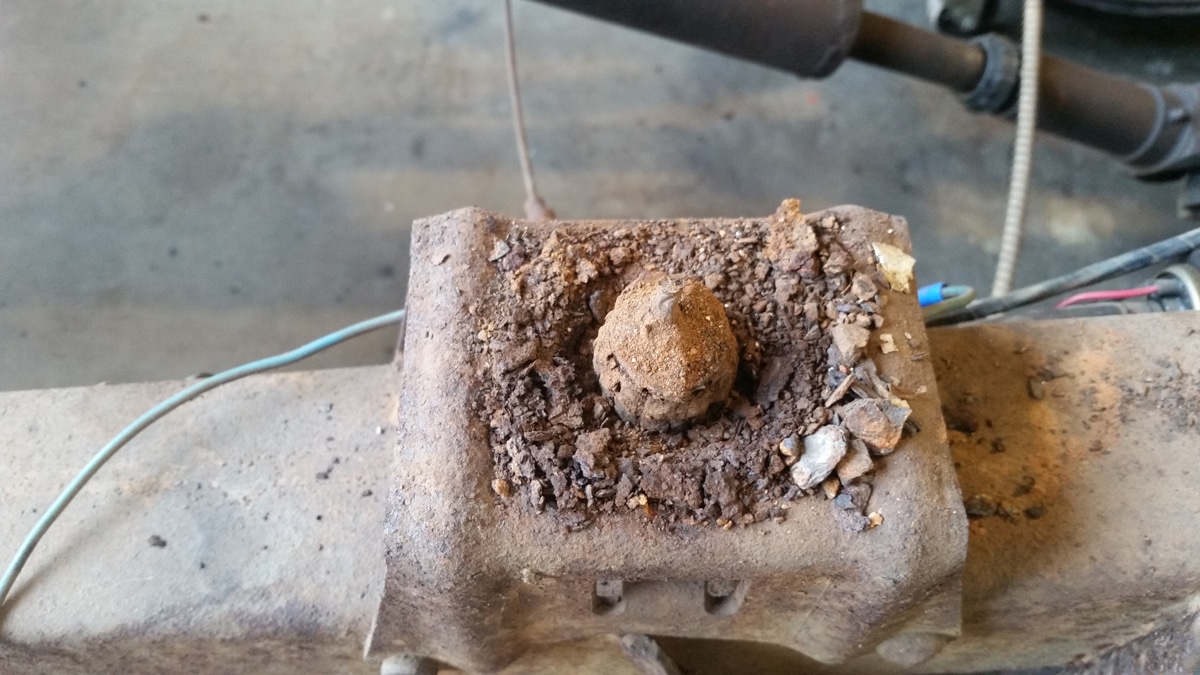
Frame Rust Removal Techniques
So you’ve found some places that are rusted and you’re wondering what to do next? Don’t let fear be your reaction. Let’s take a look at how to repair that location and get that rust off!
Several rust removal techniques are available, ranging from manual methods like sanding and grinding to chemical methods using rust converters or even electronic methods like electrolysis.
Sanding and Grinding:
This is the most basic technique and works best for surface and scale rust. A grinding wheel, sandpaper, or wire brush can be used to remove the rust and get down to the bare metal.
Chemical Rust Removers:
These products are designed to react with the rust and neutralize it. They are generally used for smaller parts or for surface rust, as they need to come into direct contact with the rust to be effective.
Rust Converters:
These are a type of chemical treatment that reacts with the rust to form a stable compound that can be painted over.
Electrolysis:
This is a more advanced rust removal technique that uses electrical current to convert rust back into iron. It’s generally used for small parts and requires some setup and safety precautions.
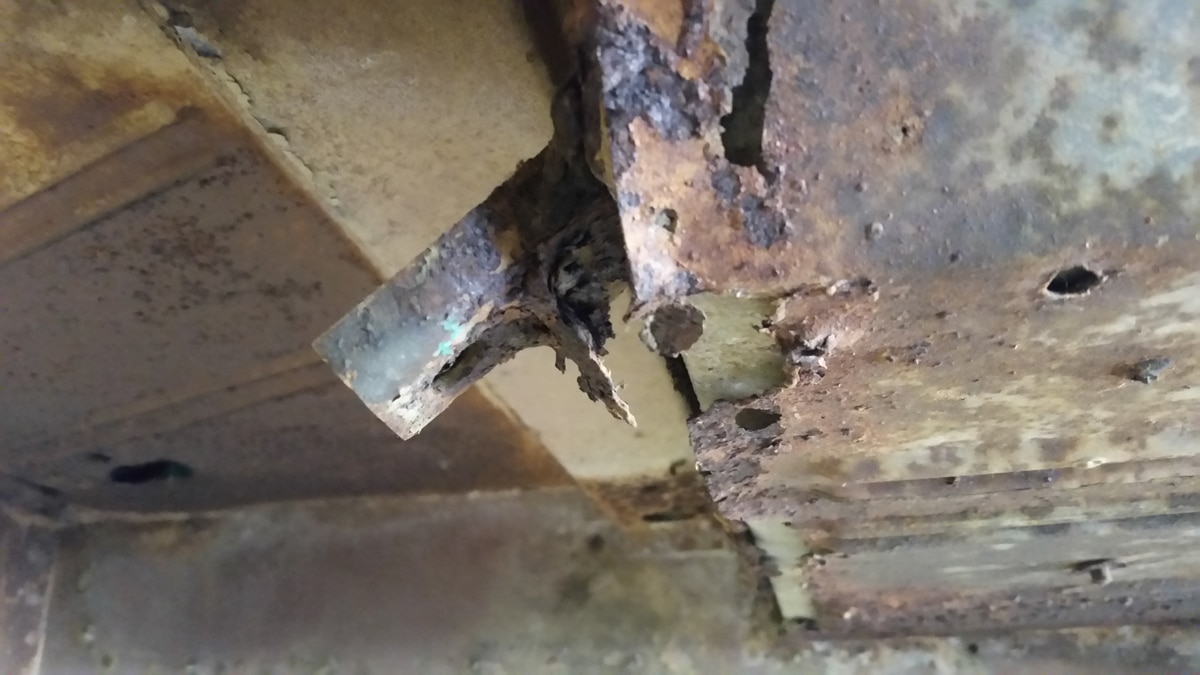
4 Steps to Prevent Rust On Your Bronco Frame!
1. Regular Cleaning
One of the simplest but most effective ways to prevent rust is by regularly cleaning your Bronco, particularly the underside. Washing off dirt, road salt, and other debris can significantly slow down the rusting process. A high-pressure wash can be particularly effective at removing materials lodged in hard-to-reach areas.
2. Proper Drying
While cleaning your vehicle is vital, so is ensuring it dries properly. Trapped moisture is a leading cause of rust. Pay particular attention to areas where water tends to accumulate, such as the frame’s underside, around the wheel wells, and any crevices within the frame. Using a high-powered air blower can assist in drying hard-to-reach spots.
3. Regular Inspection and Prompt Repair
Rust often starts in small, unnoticed areas, then spreads if left unattended. Regularly inspect your Bronco frame for signs of rust, paying particular attention to common rust areas like welds, bends, and ends of the frame tubes. If you catch rust early, you can often deal with it relatively easily with a bit of sanding and touch-up paint or rust inhibitor.
4. Protective Coatings for Your Parts
Consider investing in protective coatings. Primers, paints, and specially designed rust inhibitors can form a barrier between the metal and the elements, drastically reducing the risk of rust. For the Bronco frame, consider products like undercoatings or even more durable solutions like powder coating. This investment can significantly extend the life of your frame and save you considerable time, effort, and money in the long run.
Remember, preventing rust is always easier and more cost-effective than dealing with significant rust damage down the line. Regular maintenance, inspection, and proper care of your Bronco can keep it looking great and running smoothly for many years to come.
How do you know if a frame is too rusted?
It’s sometimes hard to tell if a frame is too rusted to be used if you don’t deal with trucks every day. You might just love the look and feel of the classic Bronco but you’re not a mechanic and that’s where we come in.
These vintage vehicles are our passion and we can help you with a few repair tips if you’re going to move forward with the frame you have.
Feel free to contact us and even send us some of your Bronco photos and show us what you’re working with. While we can’t do everything we could do in person, we’ll walk you through the steps to see if this Ford frame is in good enough condition to be saved and driven. If you’ve discovered it’s too far gone, we’ll walk you through the steps of using one of our replacement frames to make your Bronco drive like a dream.
Think your body needs to be replaced? Check out these new Bronco Tubs from Dennis Carpenter.
When to Replace the Bronco Frame
Sometimes, despite your best efforts, a frame is just too far gone, with rust permeating its entirety or compromising its structural integrity. If repairs would be more extensive and costlier than the value of the Bronco, or if safety is a concern, it may be time to consider a frame replacement.
Remember, owning a vintage Bronco is both a joy and a responsibility. Regular maintenance and checks for rust can ensure your Bronco stays road-ready and beautiful for years to come.

